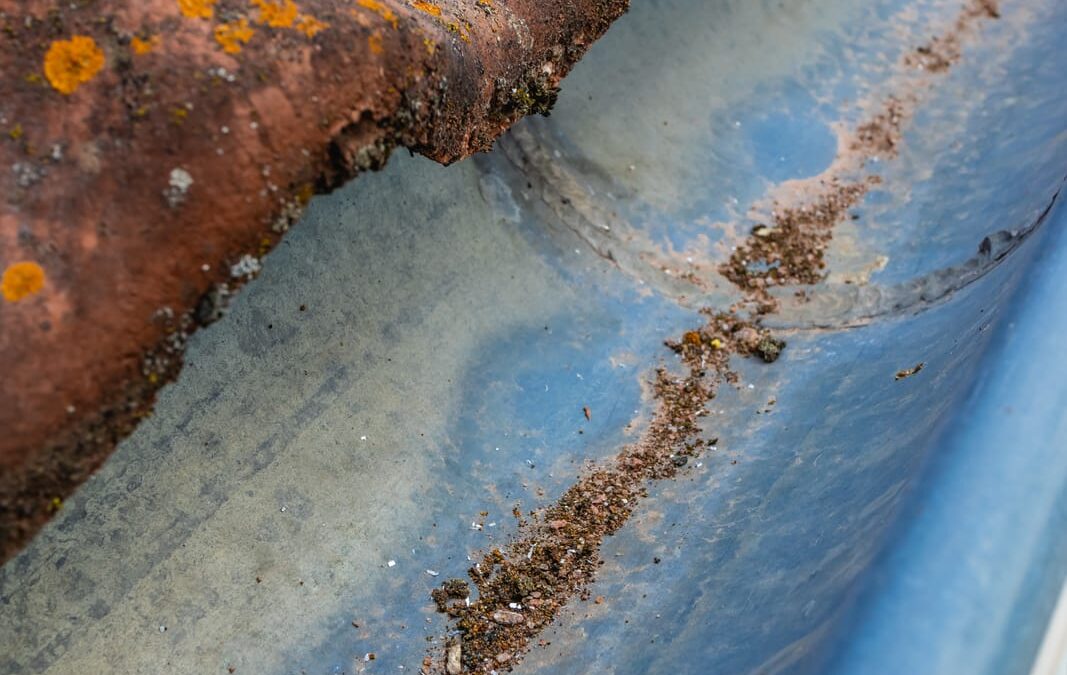To keep your gutters working their best this spring, start by inspecting gutters and downspouts for damage, leaks, or blockages—pour a small amount of water to test the flow. Next, clear out leaves and debris, focusing on corners and downspout inlets; use gloves and a hose for safety and efficiency.
Ultimately, install gutter guards and keep up with routine checks, since clogged gutters are a leading cause of home water damage and can contribute to costly repairs if left unaddressed. Uncover expert upkeep strategies just ahead.
Key Takeaways
- Inspect gutters and downspouts for clogs, leaks, and improper slope to ensure proper drainage.
- Clean out leaves, twigs, and debris from gutters and downspouts each spring to prevent blockages.
- Install gutter guards to reduce debris buildup and minimize cleaning frequency.
- Schedule routine inspections to identify and repair any damage or sagging early.
- Use proper safety gear and stable ladders or ground-level tools when performing gutter maintenance.
Inspect Gutters and Downspouts for Damage and Blockages
For effective blockage identification, check for standing water, mineral stains, or pooling—these indicate improper slope or clogs.
Test water flow by pouring water into gutters and watching for leaks or slow drainage.
Pour water into gutters to check for leaks or slow drainage—this helps reveal hidden blockages or problem areas.
Inspect downspouts for secure attachments and guarantee outlets, caps, and screens aren’t obstructed.
Document any issues for future reference and repairs.
Clean and Clear Debris for Optimal Water Flow
Even a small amount of leaves, twigs, or dirt can block water flow and lead to costly gutter damage, so it’s crucial to clear debris thoroughly each spring.
Start by gathering important gutter cleaning tools—plastic scoops, leaf blower attachments, wet/dry vacuums, and a garden hose with a low-pressure extension. Focus on gutter corners, downspout inlets, and joints, as these spots collect the most debris.
For safer cleaning, use leaf blower or vacuum extensions from the ground. Wear gloves and goggles to protect yourself from sharp debris.
After manual removal, flush gutters and downspouts with water to confirm a clear flow path. As one expert advises, “Consistent debris prevention tips and careful cleaning extend your gutter’s lifespan and prevent expensive repairs.”
Enhance Gutter Performance With Protection Systems and Routine Maintenance
Once you’ve cleared out debris, it’s time to focus on long-term solutions and regular upkeep to keep your gutters working at their best.
Installing gutter guards offers key benefits: they block large debris, reduce cleaning frequency, and are available in a variety of materials to fit your home’s needs.
Gutter guards help keep out debris, cut down on cleaning time, and come in materials to suit any home.
“Gutter guard benefits include less time on a ladder and improved water flow,” notes home maintenance expert Lisa Grant.
Don’t overlook your downspouts. Inspect them for blockages, and use downspout extensions to direct water well away from your foundation—six feet is often recommended.
Flush downspouts with a hose and secure any loose attachments.
Finally, schedule seasonal inspections, look for damage or sagging, and repair leaks promptly.
Routine maintenance guarantees your system performs efficiently when spring rains arrive.
Conclusion
By following these spring gutter maintenance tips, you’ll protect your home from costly water damage. Experts recommend inspecting gutters and downspouts, clearing all debris, and installing protection systems for best results. “Routine maintenance keeps gutters working efficiently,” says Mark Ellis, certified home inspector. Remember, a little effort now saves expensive repairs later. Use a sturdy ladder, wear gloves, and check for leaks—your home’s foundation and siding will thank you for your attention.
